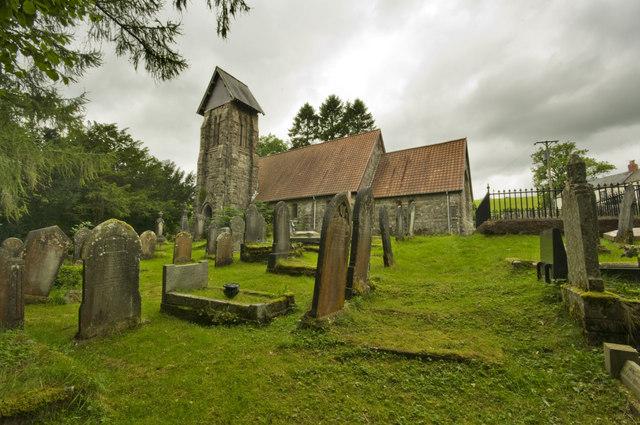St Illtyd
Dowlais, Mid Glamorgan
St Illtyd’s is one of the oldest Catholic Churches in Wales, established in 1846 soon after Catholic Emancipation.

The story of St Gwynno’s goes back to 8th century.
Vaynor, Glamorgan
The original form of the parish name was Maenor Gwynno, manor of Gynno. The first early wooden church is believed to have been burned down in 1291 during the battle of Maesyfaenor, an epic struggle between the two neighbouring Norman lords, Humphrey de Bohun, Earl of Brecknock and Gilbert de Clare, Earl of Gloucester, over the ownership of the nearby Morlais ridge and surrounding lands.
De Bohun won, at the cost of much bloodshed on both sides. Many were buried under the mound beyond the old church known as Cae Burdydd, or field of slaughter, about 100 yards down the track from this church. St Gwynno’s was rebuilt in 1295 and lasted for some 600 years when it became unsafe and was abandoned in the middle of the 19th century.
The land for a new building was given by Mrs Mary Williams of Penrhadwy. Vaynor, and work was about to start when Robert Thomson Crawshay, ironmaster at Cyfarthfa, four miles away, offered to build the church at his expense if the money already raised by the congregation, about £700, was put towards what is now St John’s in Cefn Coed.
St Gwynno appears to have been Abbot Gwynno, born either in 487 or 507, whose feast day falls on October 22 and one of that company of Celtic saints who travelled spreading Christianity throughout these lands. In Scotland he is known as Guinochus and also credited with founding Plouhinec in Britanny and Kilglin in Co. Meath in Ireland. A contemporary view of St Gwynno can be seen in the fine bas relief near the entrance; he is shown with his shepherd’s crook. The sculpture is signed AJJA, work of Arthur Ayres, winner of the Prix de Rome 1931 whose works can be seen in major international permanent exhibitions.
The stained glass window opposite, depicting the Blessed Virgin and Child, is inscribed in Welsh with a line from the Hail Mary Blessed art Thou amongst women. The figure of the guardian angel further down the church could not be more distinctively Victorian. The angel is by Joseph Edwards, Merthyr born sculptor whose works are also to be found in Westminster Abbey.
The altar and reredos, with its carved woodwork and panelling, date from 1912 given in memory of Herbert Kirkhouse (died 1904, aged 72) a mining engineer at Cyfarthfa Works who married Maria Teresa, one of the Penrhadwy daughters. Maria Teresa is commemorated in the oak font, given by her son in 1930.The present St Gwynno’s was completed in 1868.
The churchyard is noted for the grave of Robert Thomson Crawshay, the church’s benefactor, with its 11 ton granite slab inscribed ‘God Forgive Me.’ There are also graves of people at the lead edge when Merthyr was at the height of its industrial power, though many have been lost to the march of time.
The vegetation on the steep slope running down to the banks of Taf Fechan is now sanctuary to wild life, plant and animal; a protected nature reserve.
Dowlais, Mid Glamorgan
St Illtyd’s is one of the oldest Catholic Churches in Wales, established in 1846 soon after Catholic Emancipation.
Merthyr Tydfil, Glamorgan
Some buildings seem to be ageless, one is the church of St Tydfil.
Rhymney, Glamorgan
A large bilingual Welsh Baptist church built in the early 19th century.